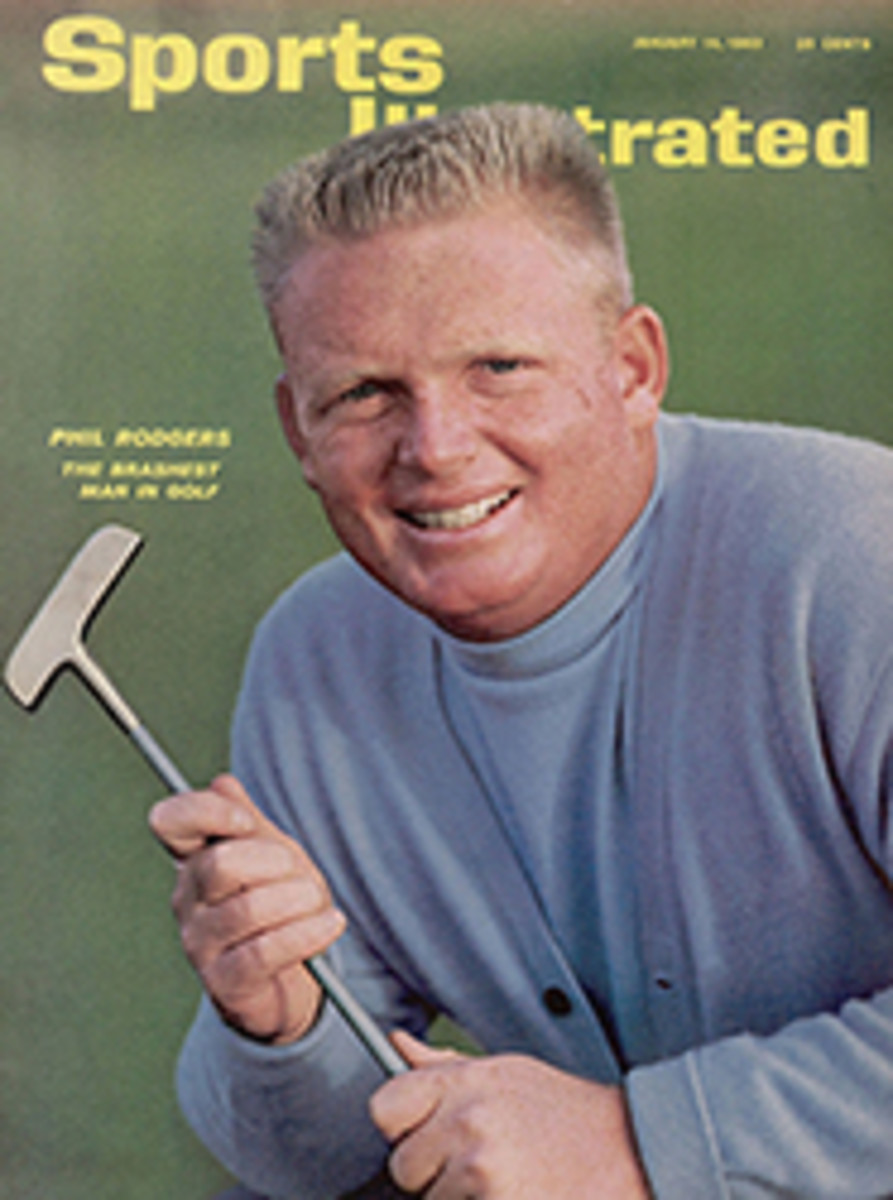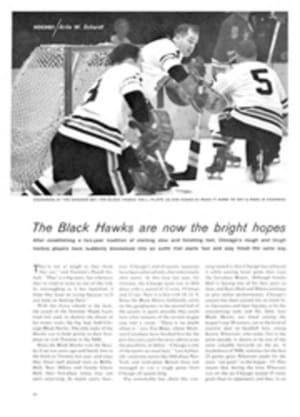
Whatever Happened to the Little Old Sailmaker?
He was a little old man in a faded blue shirt and overalls, and he sat and sewed in a sunny nook of a boatyard stitching cotton into sails as his father and grandfather had done before him. What happened to him? He vanished. "The old sailmakers were men who worked with their hands," says 37-year-old Owen C. Torrey Jr., one of the new breed. "Now they're men like myself who can't even sew." Torrey gave up a comfortable law practice to bounce sneaker-footed around a cluttered sail loft, and he is just one of many educated, analytical designers who have banished the simple old landlocked sailmaker. One of the world's best sailmakers is Lowell North of San Diego, three-time Star class world sailing champion and a structural engineering graduate of California. Joe Caldwell of Savannah prepared for his family's sailmaking business (they outfit Rebel and Thistle classes) by getting a degree in aeronautical engineering at Notre Dame. Versatile Ted Hood of Marblehead, Mass., whose sails dressed most of last year's America's Cup yachts, studied engineering at Boston's Wentworth Institute.
Owen Torrey himself is a Harvard graduate with a law degree from Columbia. As an admiralty lawyer in New York, he was well on his way to a promising career in this field when he ditched it two years ago to take over the design department of Hard Sails, Inc., a modern, rapidly expanding loft in Islip, on Long Island.
"We have three college graduates working here," says Torrey. He is a tall, spare man who, except for white sailing shoes, dresses in the regimental tailoring of Wall Street. But at Hard, he's just one of the many. Its directors' echelon is impressively laden with professional men in Brooks Brothers or Bond Street suits. Hard's president, Wallace C. Ross, is a Cornell graduate and dresses the part. Herman Schwab is a vice-president of the Empire Trust Company. John Snedeker is the business manager for Grumman's man-on-the-moon project and the TFX plane contract. W. Mahlon Dickerson is a partner in an admiralty law firm, and Peter Paige is a personnel director at the Brookhaven atomic energy peacetime plant.
The sweeping change in sailmaking tradition is a result of two revolutions—the exploding boating boom (some 500,000 sailboats are now afloat) and the successful adaptation of synthetic cloth for sails. The dockside has expanded into a bustling, lucrative marketplace. In it, once-avid weekend sailors like Torrey and Ross have discovered that they can profitably turn their avocation into vocation, making a living doing precisely what they like to do. Proof is Hard's sizable $505,000 gross last year, one of the tops in the field.
With their degrees and business acumen, analytical men like Torrey and North have brought a spanking fresh breeze to the trade. They have helped make today's sails better than ever before. "The advent of stable, synthetic material makes it rewarding for us to take pains to be accurate," says Torrey.
For years the best sails were made of Egyptian cotton, but their manufacture was a hit-or-miss business with an accent on the miss. They needed delicate, time-consuming breaking in (a process on which no two sailors ever agreed), and even then they seldom held their shape. In the early 1950s the synthetics—nylon, Orlon and Dacron—appeared. At first there were messy problems: sails, for instance, fell apart at the seams. Gradually the textile makers either eliminated or overcame these difficulties, and Dacron (nylon is used for spinnakers) became the definitive material for sails. Dacron is not only stronger than cotton and less perishable but it keeps its shape. It's this stability that allows sailmakers like Torrey to take full advantage of aerodynamic techniques and permits them to test radically experimental theories on what drives a boat best. As a result, yachting advertisements now read like a page from Scientific American: "Engineered sails for superior performance," trumpets one company; "Cut to the best scientific shape," heralds another.
Ross and Torrey are pioneers in this new science. Alone among sailmakers, Torrey plots intricate mathematical equations according to aerodynamic theories. His figures become the actual blueprint for cutting, thus eliminating casual eye judgment. By controlling curves to the nth degree on paper, the Hard task force can duplicate a winning design in a way impossible to the old-timers. With Torrey's curves and graphs a Lightning mainsail, for example, can be translated into a perfectly functioning main for a larger 5.5-meter. And, more important, both can be reproduced again and again without repeating the cut-and-try processes of the oldsters.
All Hard sails are cut from master curves that Torrey formulates from given knowns. He makes scores of computations based on the length of the mast and boom, sail area and stretch of the cloth. Then he plots three separate control curves: one for the spar bend, one for the draft and one for the cloth. Mathematically enlarged by the microscope of a graph, the resultant curves permit Torrey to determine the desired aerodynamic shape with infinite precision.
Even greater controls are in the offing—in a year or two Hard hopes to be using a computer to work out formulas, doing a week's work in minutes. Overlying the mathematics and computers, however, is the special sailorman's talent for envisioning the sail. As Torrey explains, "First you must make the subjective choice of calculating the fullness and location of the maximum draft. Making that choice," he says, "is based on your experience as a sailor."
Neither Torrey nor Ross had any intention of revolutionizing the sail business when they started in. Ross didn't even intend to become a sailmaker. "I was working for a radio station," he says, "and Hard was one of my accounts." Fascinated with the sail loft when he began doing business there in 1954, Ross hung around so much that finally the owner, his friend William Hard, snapped, "Look, you spend so much time here, why don't you buy it?" Ross didn't actually answer, "All right, I will," but he did mull the idea over that night with a friend, Peter Paige. "He was enchanted with the idea," Ross says, "and the next day we bought it."
For $17,500 Ross and Paige got a barnlike building and a company with a leaky volume of business, roughly equivalent to the purchase price. Ross took immediate command, kept the name and plugged the holes with new management. Then he quickly found that his entry into sailmaking coincided with the coming of synthetics. "We stuck our neck out and decided to use only Dacron," he says, believing that Hard was the first to work exclusively with this material. The decision gave Hard a big jump on the competition. An even bigger one came in the 6-foot-2, 175-pound person of Owen Torrey. Ross and Torrey had known each other for years as Long Island Sound racers. Torrey had his own ideas about sails and, shortly after Ross bought the company, the two met after a race in the convivial gloaming of the Tap Room of the Larchmont Yacht Club. Torrey promptly became a stockholder, a vice-president and the designer. With his slide rule, he began plotting curves on the commuter train. His first formula-cut mainsail appeared about a year later. Told by a group of Connecticut hotshots that the curve was too radical, Hard made it anyway. Bill Cox put it on his Lightning, won the world championship in Buffalo, and Hard's orders began to soar.
"It seemed to be the miraculous answer that sailmakers had been dreaming about for years," Ross later wrote to his customers. "But we were soon to find out that the picture was not so rosy." They had calculated the draft only. At that time Lightning racers sailed with a rigid mast, but some of the other one-designs raced with a bend in the mast. So Torrey went back to work plotting a second curve to allow for spar flexibility. Later he computed a third for differences in cloth.
During the six years it took them to evolve their formulas, Ross and Torrey also experimented drastically with spinnakers. Drawing extensively from parachute research, they innovated a crosscut spherical chute that sold more spinnakers than any other company. They've since worked out a flatter shape that they believe to be even more successful.
Hoisted by its own spinnakers. Hard grew fast, but with expansion came competition. Since Hard's initial success with Lightnings, other analytically designed sails have appeared. "Now Murphy & Nye of Chicago have one that's tough to beat," says still another competitor—Bob Seidelmann of New Jersey. "A sail to a skipper is like horsepower to an auto driver," says Murphy & Nye's Dick Stearns, world Star class champion. "He is interested in only one thing, how fast can it make the boat go? Cost, durability and other considerations are way down the list." In this tough, Detroitlike arena, the leaders must constantly improve to stay on top. Lowell North has, for example, brought forth a roach-reef system, which is a complicated name for an ingeniously simple way of varying draft even while racing by trimming the main with a line connected to the tack. One of the more dazzlingly unorthodox new designs comes from a young industrial designer, Andrew T. Kostanecki, who developed a way of laminating sails by using glue and nylon spinnaker tape. Manufactured by Ratsey & Lapthorn Inc., the Laminair is probably the smoothest sail ever made, but only time and use will tell whether the experiment will stick.
For, despite scientific techniques, sail-making is still a trial-and-error process. "There's still not much useful research about what really makes a boat go," Torrey says. "We don't have millions to spend on wind tunnels and, even if we did, there are so many variables like wind changes, how the mast is stepped, a dirty bottom, how the skipper handles the helm and so on. But with mathematics, we can at least get into the ballpark."
PHOTO
SCIENTIFIC SAILMAKERS OWEN TORREY (LEFT) AND WALLY ROSS REPRESENT THE NEW IMAGE OF THEIR TRADE

